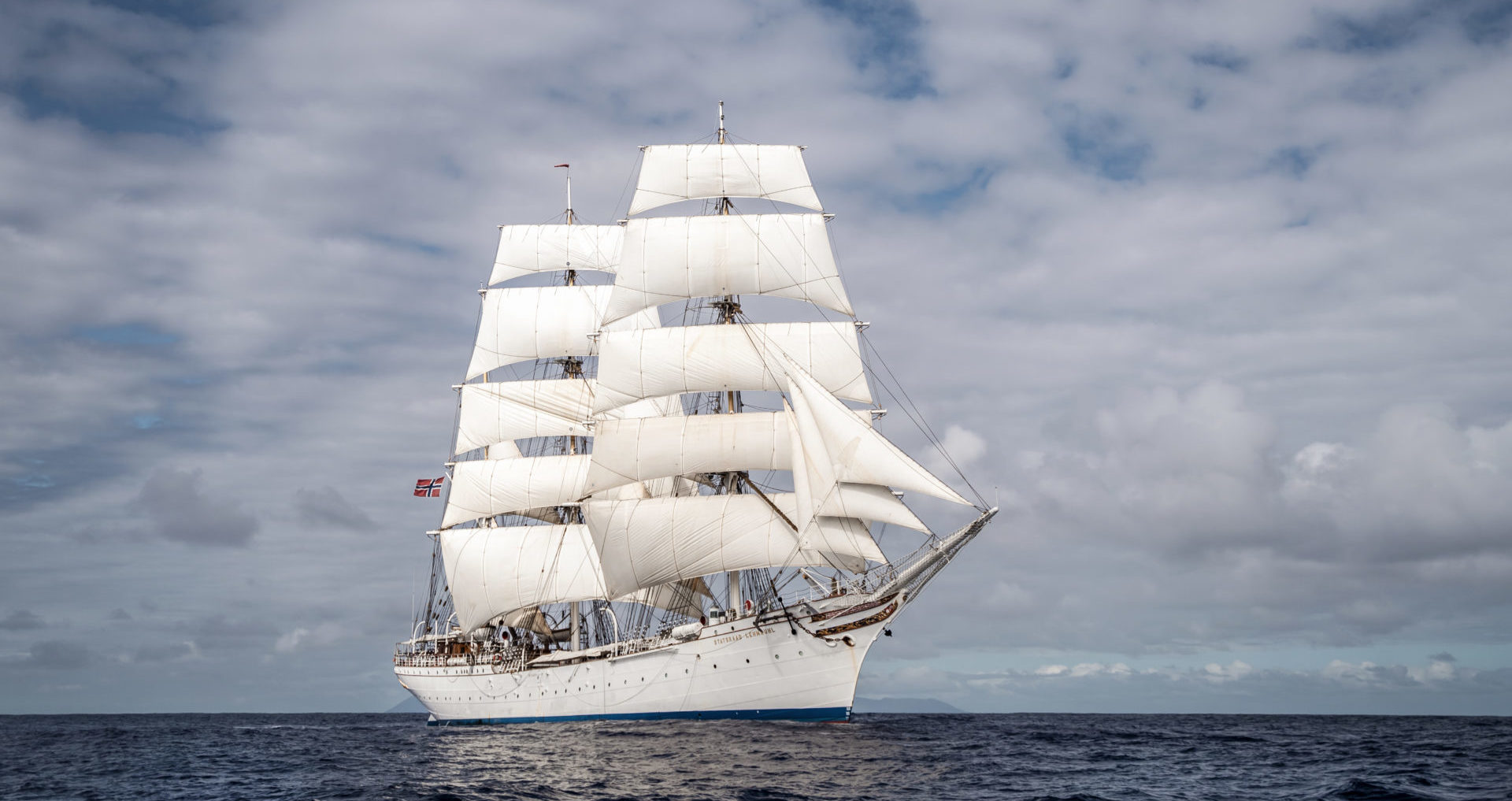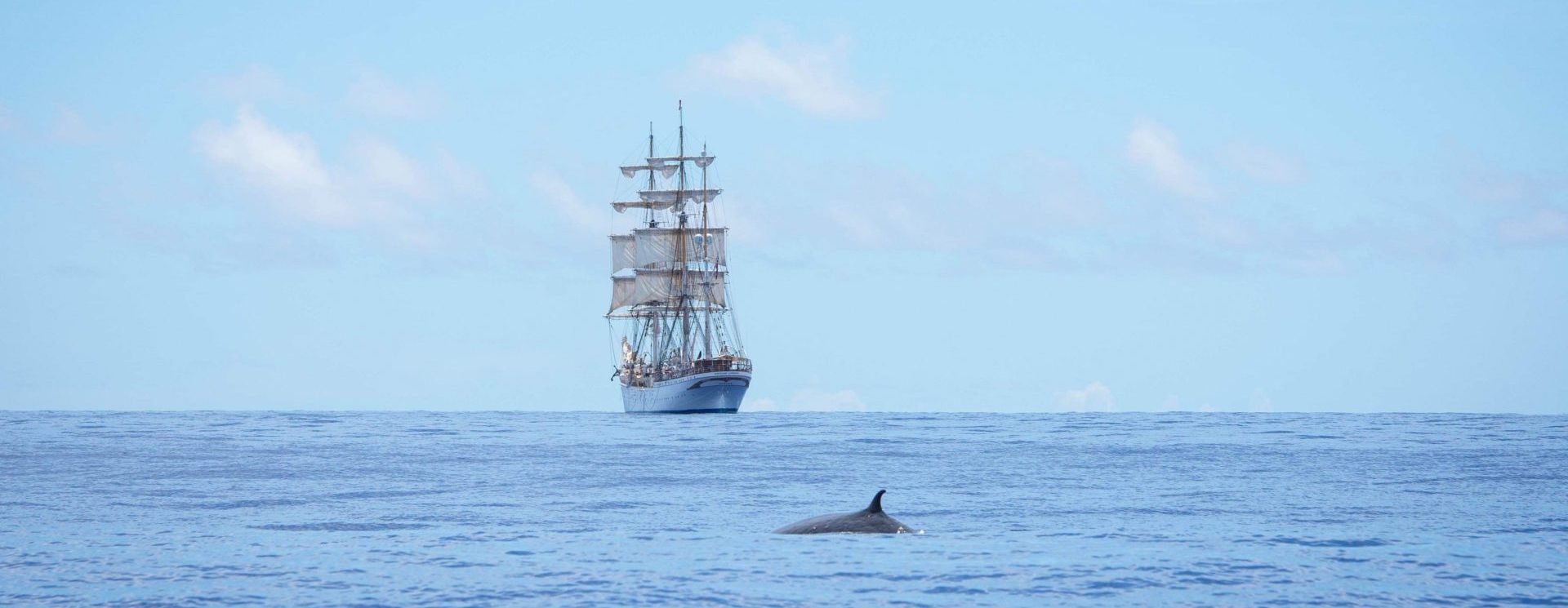Statsraad Lehmkuhl Embarks on Acoustic Mission
Equipped with an advanced underwater microphone, Statsraad Lehmkuhl will be listening to the sounds of the ocean during the upcoming One Ocean Expedition. This hydrophone, a gift from the Rieber Foundation, will provide new insights into both marine life and man-made noise. At the Bergen Aquarium, the public will be able to experience the sounds of the expedition in a new and exciting exhibition.
“The ocean may look calm, but there's a lot of sound beneath the surface.” Geir Huse, Research Director at the Institute of Marine Research
“When you walk in the forest, you hear birdsong and animal sounds, from the wind and sounds from many exciting things. It’s really the same underwater, but we know very little about it,” says Bjart Nygaard, chairman of the GC Rieber Foundations.
With the donation of an underwater microphone, the foundation wants to support marine research and disseminate knowledge to the public.
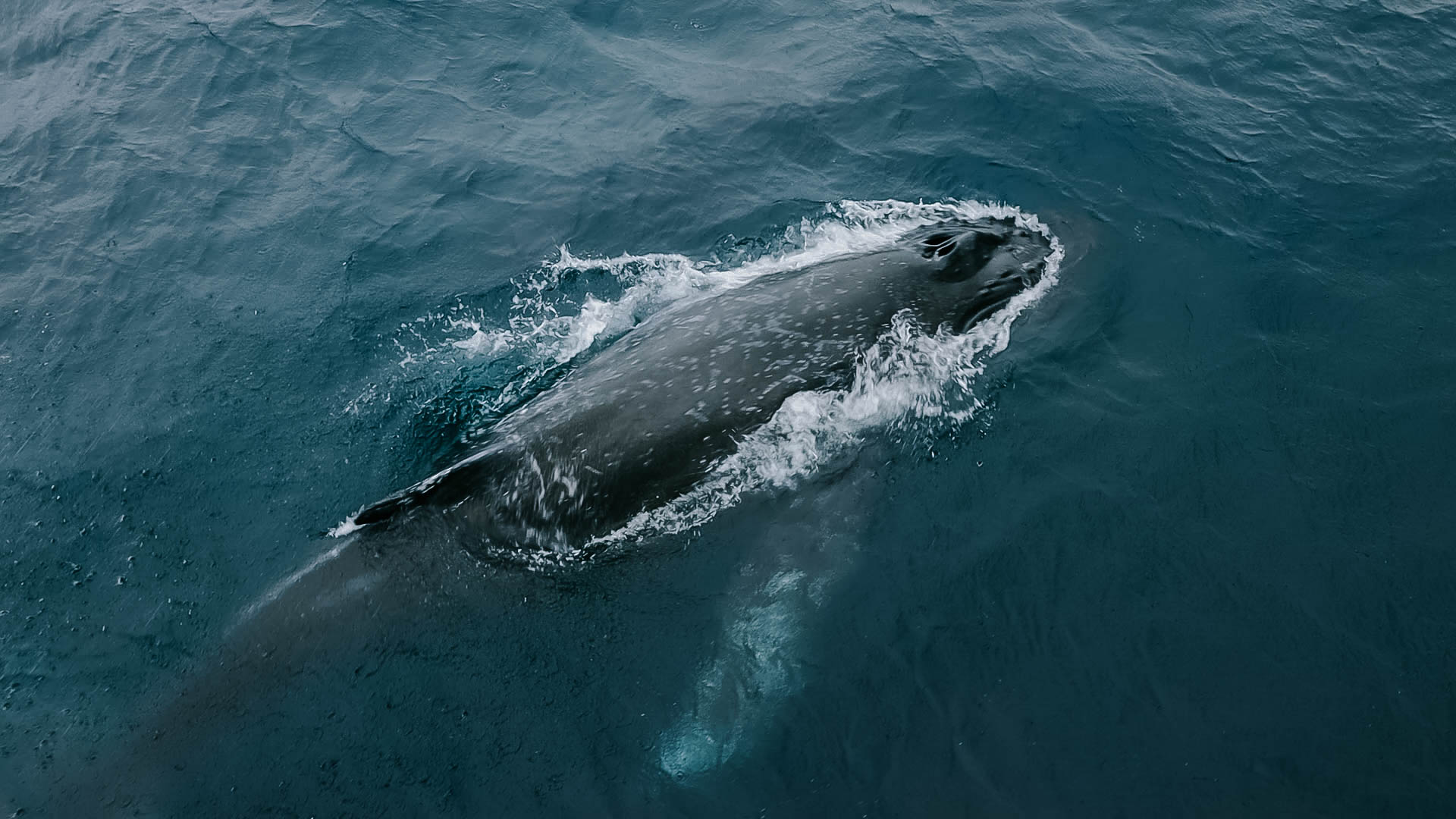 The hydrophone will capture both natural sounds and man-made noise in the ocean. This whale came to visit during the previous expedition. Photo: Hanna Thevik
The hydrophone will capture both natural sounds and man-made noise in the ocean. This whale came to visit during the previous expedition. Photo: Hanna Thevik
“The ocean may look quiet, but there is a lot of sound under the surface,” says Geir Huse, research director at the Institute of Marine Research (IMR).
“Mapping both biological sounds and man-made noise is incredibly important, as there is little data in this area.”
Unique Expedition, Groundbreaking Data
The One Ocean Expedition, with its long duration of 12 months and unique sailing route, gives researchers unique opportunities to study marine life and the effects of human noise, especially in Arctic regions where knowledge is limited.
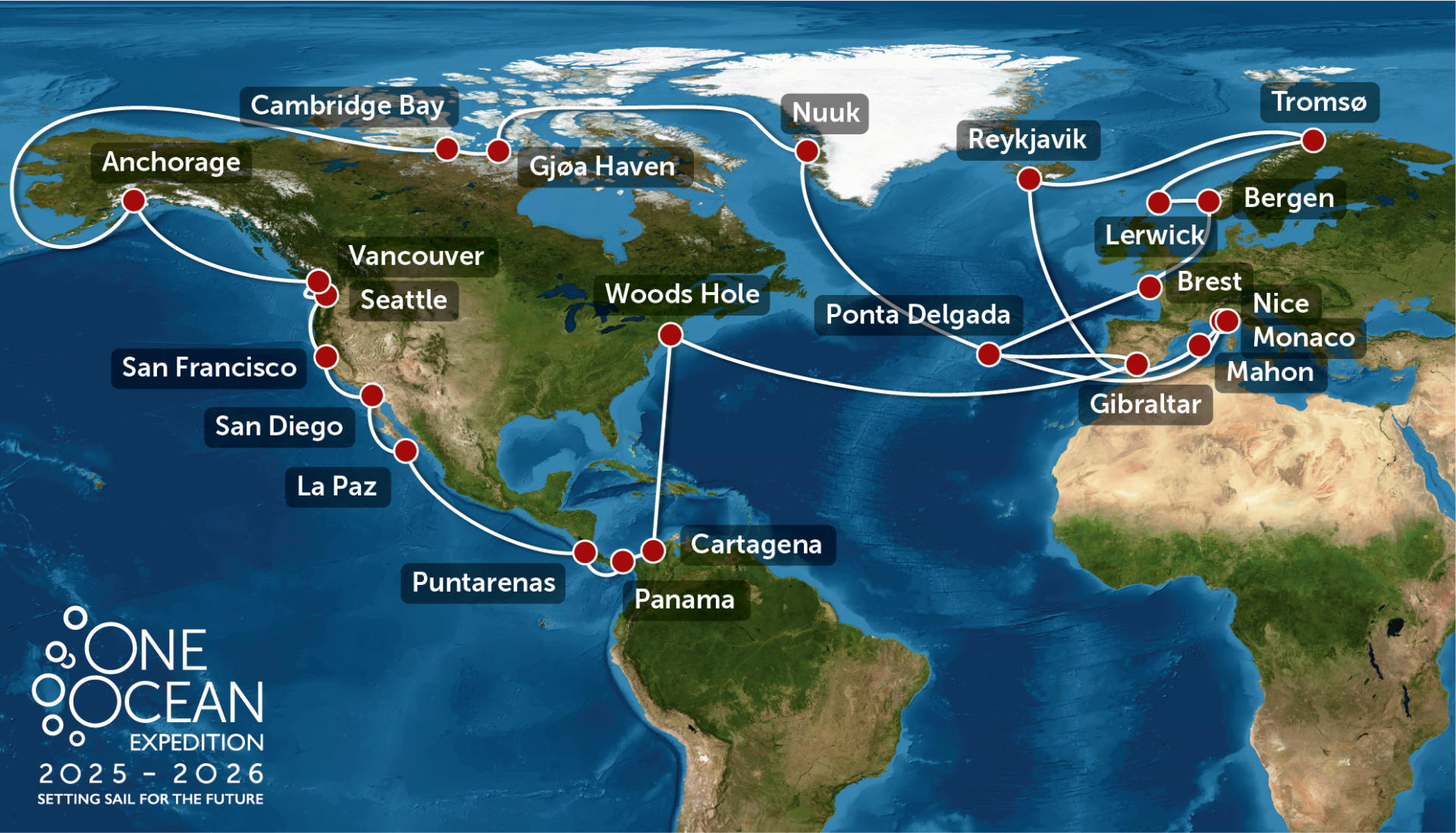
If everything goes smoothly, the One Ocean Expedition will sail through the famous Northwest Passage. This exciting journey could give marine researchers a unique collection of underwater sounds.
“We expect to hear mostly marine mammals like dolphins and whales. They make powerful sounds that carry far,” says Huse.
“But many fish species also make sounds. In Lofoten, there is a cacophony of sounds when male cod court females with loud drumming sounds during spawning season – a real sea’s capercaillie! It will be exciting to see what is captured when we drop a microphone into the deep.”
Sailing Ship: The Perfect Sound Catcher
In water, sound travels much faster than in air. The hydrophone can therefore capture sounds from large areas.
“Without disturbing noise from engines and propellers, a sailing ship is perfect for underwater sound recording,” says Huse.
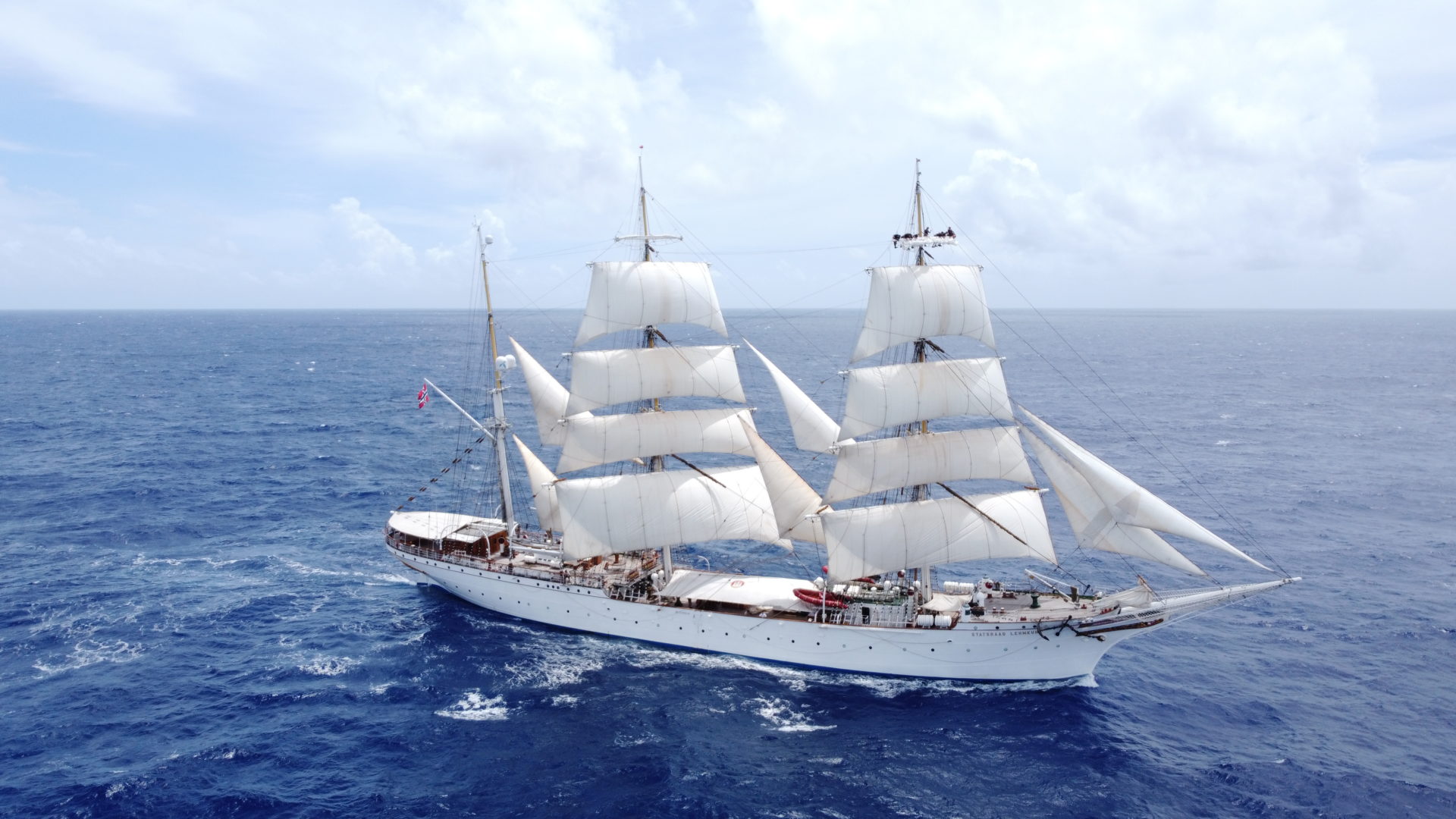 Unlike modern, motorized research vessels, a sailing ship offers a silent environment for underwater audio recording, free from the disruptive noise of engines and propellers – perfect for studying marine life! Photo: André Marton Pedersen
Unlike modern, motorized research vessels, a sailing ship offers a silent environment for underwater audio recording, free from the disruptive noise of engines and propellers – perfect for studying marine life! Photo: André Marton Pedersen
Sounds from the Sea at the Aquarium
The Bergen Aquarium has also received funding from the Rieber Foundation for a new exhibition where the sounds of the sea are in focus. Recordings from the hydrophone on Statsraad Lehmkuhl will eventually become part of the exhibition.
“I am sure the public will be surprised by both the natural sounds and the man-made sounds. You don’t believe it until you hear it – for better or worse!” says Terje Breivik, director of the Aquarium. 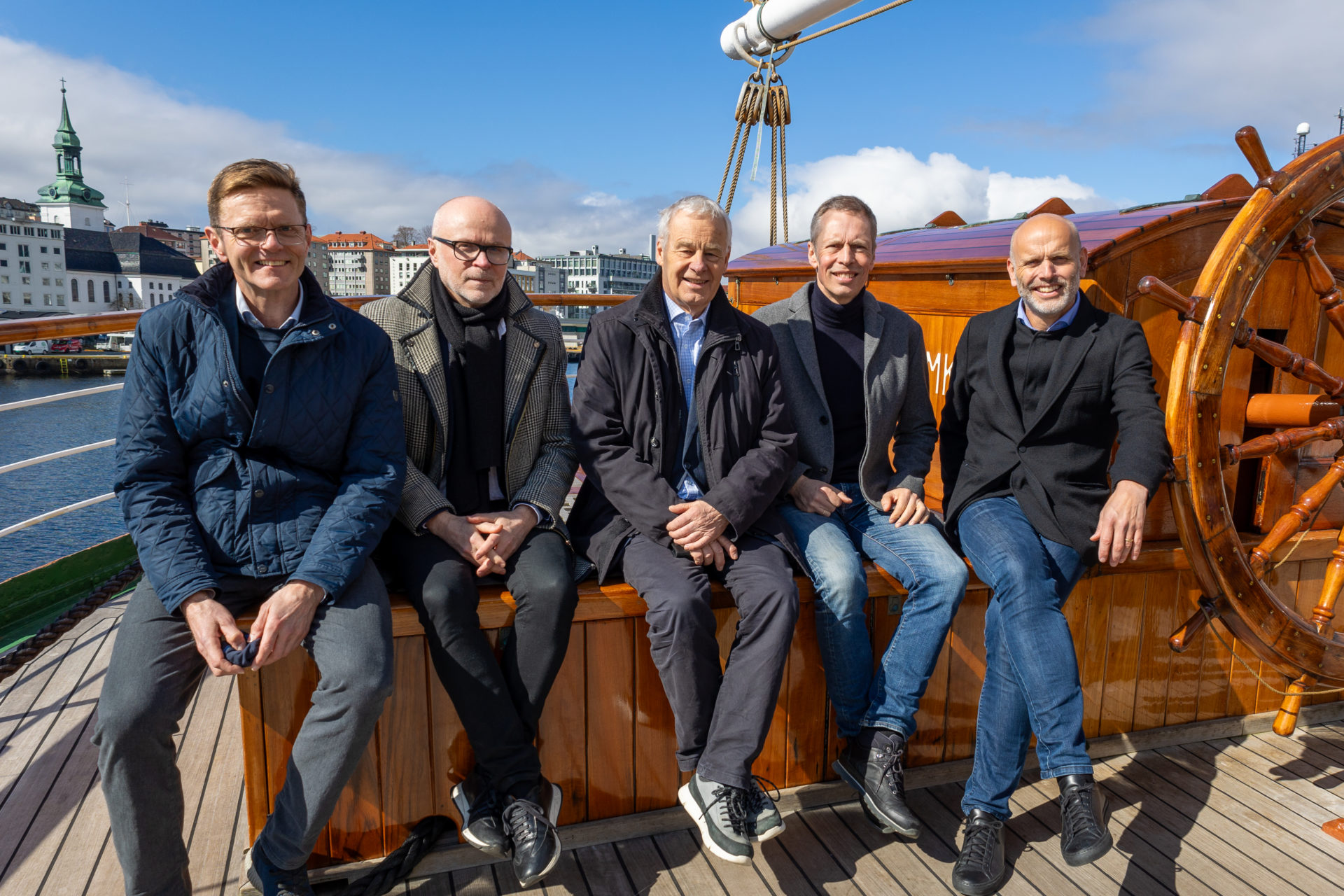
A strong collaboration between the Bergen Aquarium, GC Rieber Foundations, the Institute of Marine Research, and Statsraad Lehmkuhl will make the sounds of the ocean accessible to both scientists and the public. From left: Terje Breivik, Director of the Bergen Aquarium, Sølve Westli, Exhibition Project Manager, Bjart Nygaard, Chairman of the GC Rieber Foundations, Geir Huse, Research Director at the Institute of Marine Research, and Haakon Vatle, Director of the Lehmkuhl Foundation and Expedition Leader for One Ocean Expedition. Photo: Helene Spurkeland
Impact of Human Noise
Marine researcher Huse draws a parallel to the age of sail.
“Then there was almost no man-made noise in the ocean. Today we have countless vessels and a lot of activity along the coast, especially from the oil industry and offshore wind development.”
Researchers still know little about how noise affects marine life.
“This is a type of pollution that has been underestimated. We know that whales, which used to communicate over large ocean areas, now have trouble getting their sounds across. Human noise disrupts messages. Fish migration routes can also be affected by noise,” says Huse.
Collaboration for Knowledge and Awareness
The hydrophone and the collaboration between Statsraad Lehmkuhl, MRI and the Aquarium will give us more knowledge about the sounds of the sea.
“This is exactly the course we want for the ship,” says Haakon Vatle, director of the Lehmkuhl Foundation.
“We want to use the ship to bring research and people closer together.”
Vatle thanks the Rieber Foundation for its support.
“We are incredibly grateful for the Rieber Foundation’s contribution to equipping Lehmkuhl for the future,” says Vatle.
“The hydrophone will provide us with invaluable data on both man-made noise and marine life in the ocean. The data will be analyzed by the Institute of Marine Research and then shared with the Aquarium and the public. That Statsraad Lehmkuhl can help raise awareness of ocean health in this way is fantastic,” says Vatle.
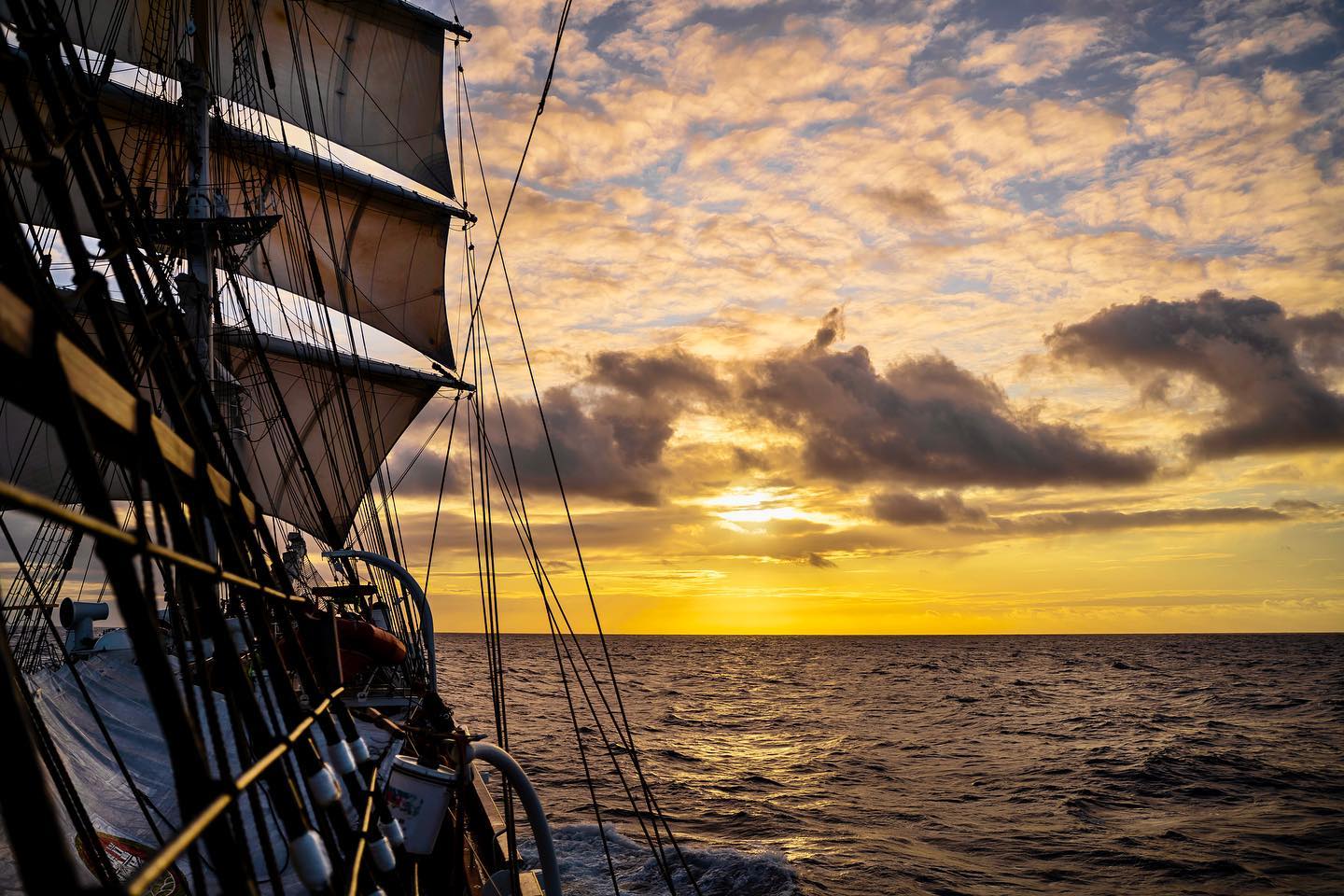 Statsraad Lehmkuhl: Reducing the gap between the science and the public. Photo: Malin Kvamme
Statsraad Lehmkuhl: Reducing the gap between the science and the public. Photo: Malin Kvamme
One Ocean Expedition at the Aquarium
The One Ocean Expedition 2025-2026 will, like the previous expedition, have its own exhibition at the Bergen Aquarium. Director Terje Breivik promises an even more exciting experience for the public, with a stronger focus on the sounds of the sea.
“We want to give people a unique opportunity to experience the Lehmkuhl universe on ‘home ground’ in Nordnes,” says Breivik.
“You don’t have to go to the Northwest Passage to take part in the One Ocean Expedition. If you miss Statsraad Lehmkuhl, just visit the Aquarium!”
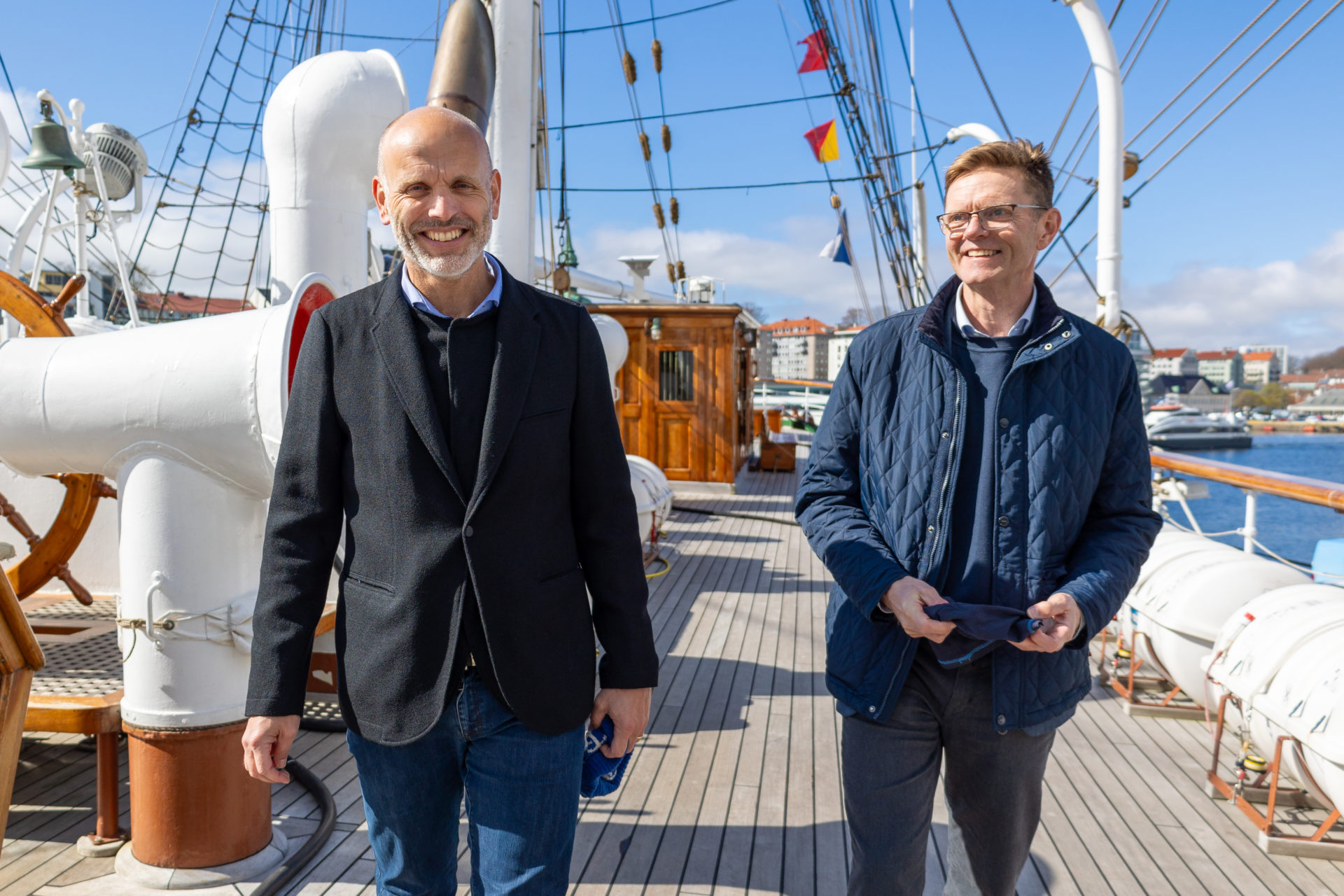
Haakon Vatle and Terje Breivik – two leaders with a shared vision: To inspire engagement and knowledge about the ocean. Statsraad Lehmkuhl and the Bergen Aquarium are expanding their collaboration towards the next One Ocean Expedition, which starts in April 2025. Photo: Helene Spurkeland
Main photo: Jesper Rosenmai
Photo below: Malin Kvamme
By Helene Spurkeland
Published 29.04.24
